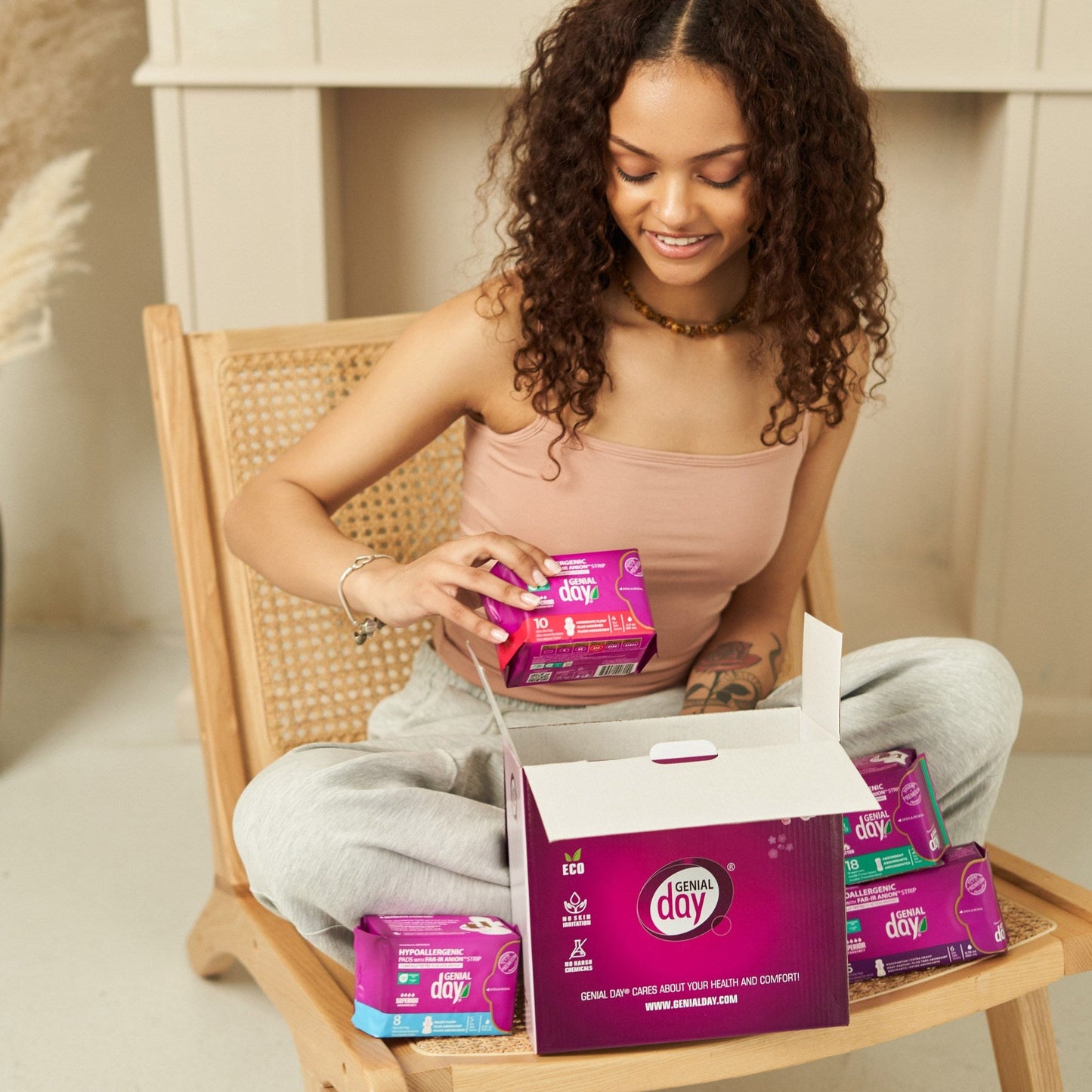Menstrual cups are safe, efficient, inexpensive, and healthy for your body (and the environment). So why aren't more women using them?
We guess that the hesitation stems from a lack of understanding and familiarity. After all, these days, tampons and pads dominate the period market. And they come in just about every shape, size, and iteration imaginable. By comparison, menstrual cups—reusable silicone cups that sit in the vagina and collect period blood—are shrouded in a bit of mystery.
There are so many myths about menstrual cups and menstruation. Every newly discovered thing bring myths along. Similarly, questions arise or maybe give rise to the myths.
Does the blood flow back into the womb when the cup is full? Is it true that only those who have already given birth can use the larger cup?
We put all the facts on the table and gathered the most common myths and truths. Here is the truth about five myths that might be keeping you from switching over to a cup—and why it’s time to put the misinformation to rest.
Myth #1 They are difficult to put in.
Many assume that menstrual cups will be tricky and painful to apply since they are larger than tampons. But did you know they're actually increasingly being used by younger generations? Come on, if an 11-year old girl can insert one, so can you! It just takes a bit of getting used to.
You'll likely have to practice for a cycle or two before you really get in the swing of things, but most cups come with detailed instruction manuals to guide you along the way.
You’ll see there are multiple positions and techniques for inserting cups. When properly inserted, a menstrual cup will be hardly noticeable inside the body.
Menstrual cups are also unique in that they help you get to know your body.
Because most tampons these days come with an applicator, many women are out of touch with their own anatomy.
By comparison, menstrual cups require you to manually insert the silicone cup using your fingers and check for a tight seal by running a finger along the cup’s base, thereby helping the user become more familiar with her body—be it the position of her cervix, the distance between her vaginal walls, etc.
Myth #2 They are uncomfortable.
Menstrual cups are designed to comfortably sit in the vaginal canal past the pelvic zone, but away from the cervix. Nearly any consistent cup user will tell you that once the cup is inserted correctly, it's easy to forget it's there altogether.
This is because the body actually adjusts to the presence of the cup immediately upon insertion, and the vaginal walls keep the cup snug and in place, regardless of what physical activities you engage in.
Menstrual cups are super comfortable (almost undetectable!), they stay put as you move (perfect for active women!), and you can leave them in for up as long as to 12 hours without worrying about sensation, spillage, or odor.
Myth #3 It can get lost inside my body.
When folded in half, the soft, flexible cup slides right up where a tampon would normally go.
Literally, you won't ever lose your cup, women health specialists assert. It is not going to venture through your womb or out your colon. No, the cup would never get lost inside your body.
If you feel yourself internally with your finger you will realize that there is no room for your cup to get lost. The tiny hole in the cervix will never let the cup to move inside. This tiny hole cannot suck in the cup.
Yes, it can move a little deeper within the vagina and you can smoothly bring it down with the help of 3-4 pushes with your vaginal muscles.
Myth #4 When the cup is full, the blood flows back into the uterus.
The most common myth is when the cup is full, the fluid flows back to the womb. Wrong! The blood flows into the vagina and thus into the cup through the tiny hole in the cervix.
It is not possible for the blood to flow back into the womb, not even if you're upside down. The muscles of the uterus push the fluid from the uterus outside the body actively through the cervix and vagina. Your cervix, shaped like a donut, has a very tiny hole that does not allow the fluid to flow back into the uterus.
Myth #5 I’d have to remove it before using a bathroom
The truth is, you can pee with your menstrual cup in. You can even poo when you wear it! That’s something you cannot with a tampon in.
With the cup inserted, you can easily go to the bathroom if you make sure it's not out of place, like during a bowel movement. Good hygiene is essential so that no foreign bacteria enter the vagina or cup.
If you want to make sure you are comfortable and clean, remove the cup before going to the toilet and wash your hands (and down there) carefully before inserting the clean cup. You can empty the cup as often as you'd like!
Myth #6 They leak and they are messy.
Essentially, the most common reason why menstrual cups leak for first-time users is due to improper positioning. If the cup is inserted crooked, doesn’t fully ‘pop’ open, or it doesn’t seal to your vaginal walls, there is a chance for leakage—but with some practice and experimentation, these initial leakage issues all but disappear.
Menstrual cups are designed to catch all of the blood directly from your cervix, so once you become an insertion pro, there will be no mess and you won’t have to touch any blood.
Not to mention that unlike tampons, which dry out the vagina regardless of when they are inserted, by absorbing all of the vaginal moisture and natural fluids (causing itchiness and dryness), you can actually even insert your cup before your period begins to ensure it won't catch you off guard.
Myth #7 One size fits all
One size cup can usually fit most women, but not everyone. Each one of us is different externally and internally. Based on our lifestyle, the width of the vaginal walls varies for different women.
If you have narrow walls, you should use cups with a smaller diameter and apparently larger diameter cups for wider vaginas.
Another important factor to consider is the length of the cervix. You should select a cup length in a way that the cup does not form a seal on the cervix, but only with the vaginal walls as it can cause cramps in the lower abdomen.
Menstrual cups are really not gross. We promise. Even the most squeamish among you can definitely figure this out. It takes some getting used to, but keep at it! Eventually, you’ll find the magic spot.
An easy period, no strings attached. Throw those tampons away and never look back.




